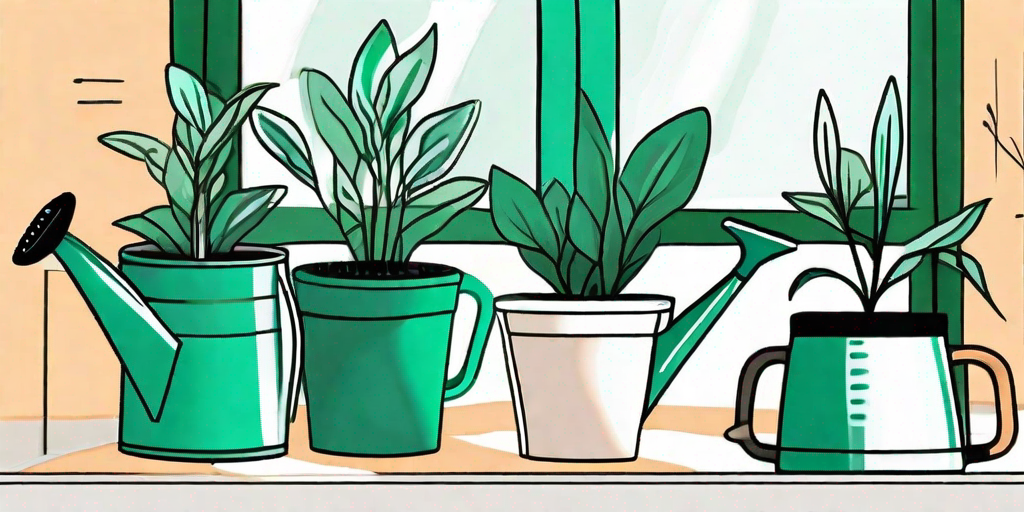
Welcome to the wonderful world of Ti plants, where the foliage is vibrant, the care is easy, and the bragging rights are endless. Whether you're a seasoned green thumb or a newbie plant parent, this guide will help you navigate the ins and outs of Ti plant care. So, let's dive in, shall we?
Understanding the Ti Plant
Before we delve into the nitty-gritty of Ti plant care, let's take a moment to appreciate this tropical beauty. Native to Southeast Asia and the Pacific, the Ti plant, also known as Cordyline fruticosa, is a bold and dramatic houseplant that's sure to turn heads. With its long, glossy leaves that come in a variety of colors, it's a statement piece that says, "Look at me, I'm fabulous!"
But don't let its diva-like appearance fool you. The Ti plant is surprisingly low-maintenance and forgiving, making it a great choice for beginners. It's like the plant equivalent of a unicorn - beautiful, magical, and surprisingly easy to keep alive.
The Anatomy of a Ti Plant
One of the most striking features of the Ti plant is its leaves. They're long, lance-shaped, and come in a variety of colors, from deep greens to vibrant reds and purples. Some varieties even have leaves that are variegated or striped, adding an extra layer of visual interest.
The Ti plant also produces small, fragrant flowers that are a favorite of pollinators. However, it's rare for indoor Ti plants to bloom, so don't feel bad if yours never does. It's still fabulous without the flowers.
How to Care for Your Ti Plant
Now that we've covered the basics, let's get down to business. Here's how to keep your Ti plant happy and healthy.
Lighting
Like most tropical plants, the Ti plant loves bright, indirect light. Too much direct sunlight can scorch its leaves, while too little light can cause its colors to fade. So, find a spot in your home that gets plenty of natural light, but isn't directly in the path of the sun's rays.
If you're not sure if a spot is right, try this trick: hold your hand up to the light. If you see a soft shadow, that's indirect light. If the shadow is sharp and defined, that's direct light.
Watering
When it comes to watering, the Ti plant is a bit of a Goldilocks. It doesn't like to be too dry or too wet, but just right. The top inch of soil should be dry before you water it again. And when you do water, do so thoroughly, until water comes out of the drainage holes.
Overwatering is a common mistake, and can lead to root rot. So, when in doubt, it's better to underwater than overwater. Your Ti plant will thank you for it.
Feeding
Feeding your Ti plant is like giving it a little spa treatment. It's not necessary, but it can help keep your plant looking its best. Use a balanced, water-soluble fertilizer once a month during the growing season (spring and summer). During the fall and winter, you can cut back to feeding every other month.
Remember, less is more when it comes to feeding. Too much fertilizer can burn the roots and leaves, so always follow the package instructions.
Common Ti Plant Problems and How to Solve Them
Even with the best care, your Ti plant may encounter a few bumps along the road. But don't worry, we've got you covered. Here are some common problems and how to solve them.
Yellow Leaves
Yellow leaves can be a sign of overwatering. Check the soil to see if it's waterlogged. If it is, let it dry out before watering again. If the problem persists, you may need to repot your plant in fresh soil.
Yellow leaves can also be a sign of nutrient deficiency. If your plant has been looking a little lackluster, try giving it a dose of fertilizer. Just remember to follow the package instructions to avoid overfeeding.
Brown Tips
Brown tips on the leaves are often a sign of low humidity. The Ti plant is a tropical plant, after all, and it likes its air a bit moist. Try misting your plant with water, or place it on a tray of pebbles filled with water to increase humidity.
If all else fails, you can always move your plant to a more humid room, like the bathroom. Just make sure it still gets enough light.
Frequently Asked Questions
Can I propagate my Ti plant?
Absolutely! Propagating your Ti plant is a great way to multiply your plant collection (and impress your friends). Simply cut a stem or leaf, let it dry for a day or two, then plant it in a pot with well-draining soil. Keep the soil moist, and in a few weeks, you should see new growth.
Is the Ti plant toxic to pets?
Unfortunately, yes. The Ti plant is toxic to dogs and cats if ingested. So, if you have furry friends at home, it's best to keep your Ti plant out of their reach.
Why are the leaves on my Ti plant drooping?
Drooping leaves can be a sign of overwatering or underwatering. Check the soil to see if it's too dry or too wet, and adjust your watering schedule accordingly. If the problem persists, your plant may be root-bound and need a larger pot.
Conclusion
And there you have it, folks! A comprehensive guide to caring for your Ti plant. With a little love and attention, your Ti plant will thrive and become the star of your indoor garden. So, go forth and plant with confidence. Remember, the only thing that's stopping you from becoming a plant whisperer is your own self-doubt. Happy planting!















